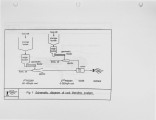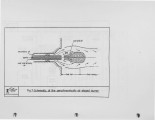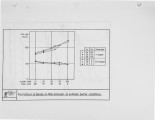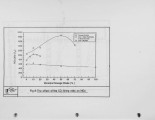| OCR Text |
Show -4- The straw was shredded and chopped to a "particle size" in the range of 1-4 centimetres, and transported to the burner as shown in Figure 4. Dried sewage sludge was delivered as a coarse material (3 to 5 mm), and milled in the IFRF facilities to approximately 800/0 through a 75~lm sieve. Coal Blending Studies In this study [3], the effect of coal blends on the performance of the AASB under staged and unstaged operation was studied in detail. The experiments were executed in two phases. In the first phase, a semi-anthracite and a high-volatile bituminous coal were blended and fired . In the second phase, low-volatile and high-volatile bituminous coals were used. In each experimental phase, the two parent coals and three blends were fired. Nominal blending ratios were 75/25, 50/50 and 25/75 on a percentage thermal input basis. Results showed that for unstaged firing, NOx levels increased linearly with the fraction of high volatile coal, as shown in Figure 5. In all cases, results could be correIa ted wi th the vola tile nitrogen contents of the individual parent coals and their blends. In the unstaged flame, it was estimated that circa 55% of the volatile nitrogen and 150/0 char nitrogen was converted to NOx. For the staged flames, see Figure 5, NOx emissions were very similar for all parent coals and blends. Detailed analysis of the data suggested that very little of the volatile nitrogen could have been converted to NOx. In these flames, around 30% of the char nitrogen was converted to NOx, illustrating the importance of the |
























